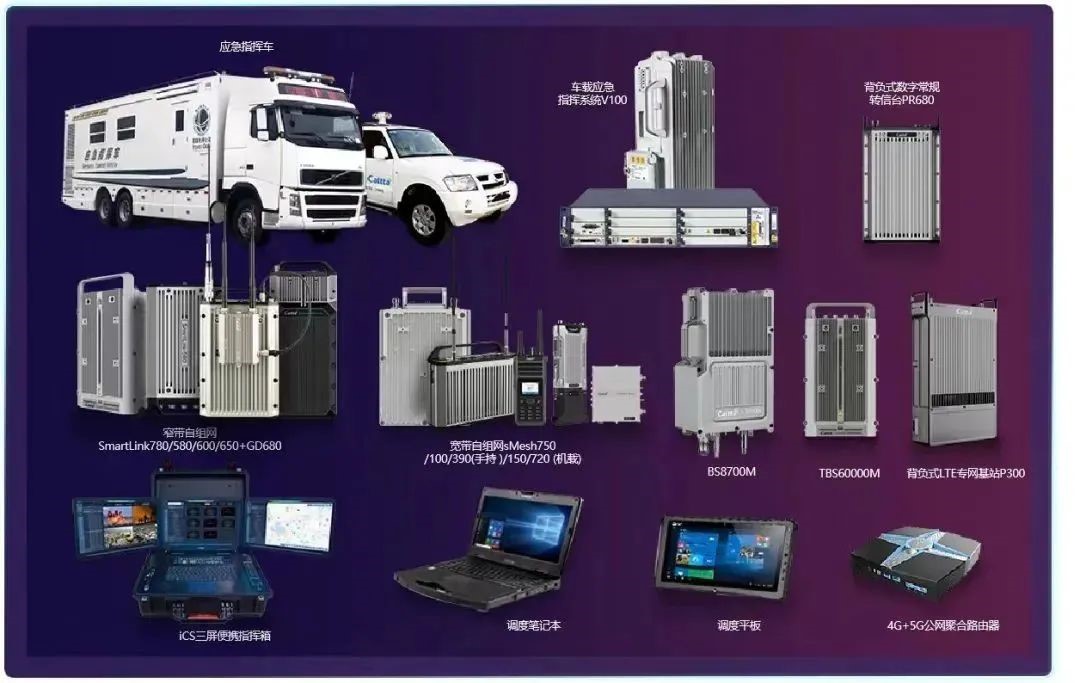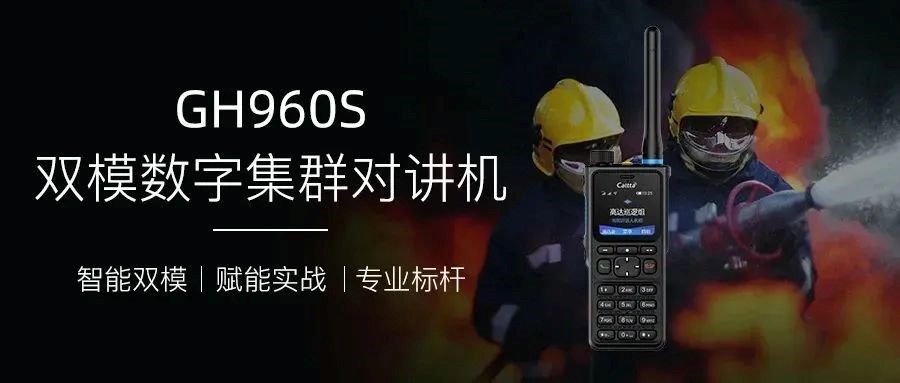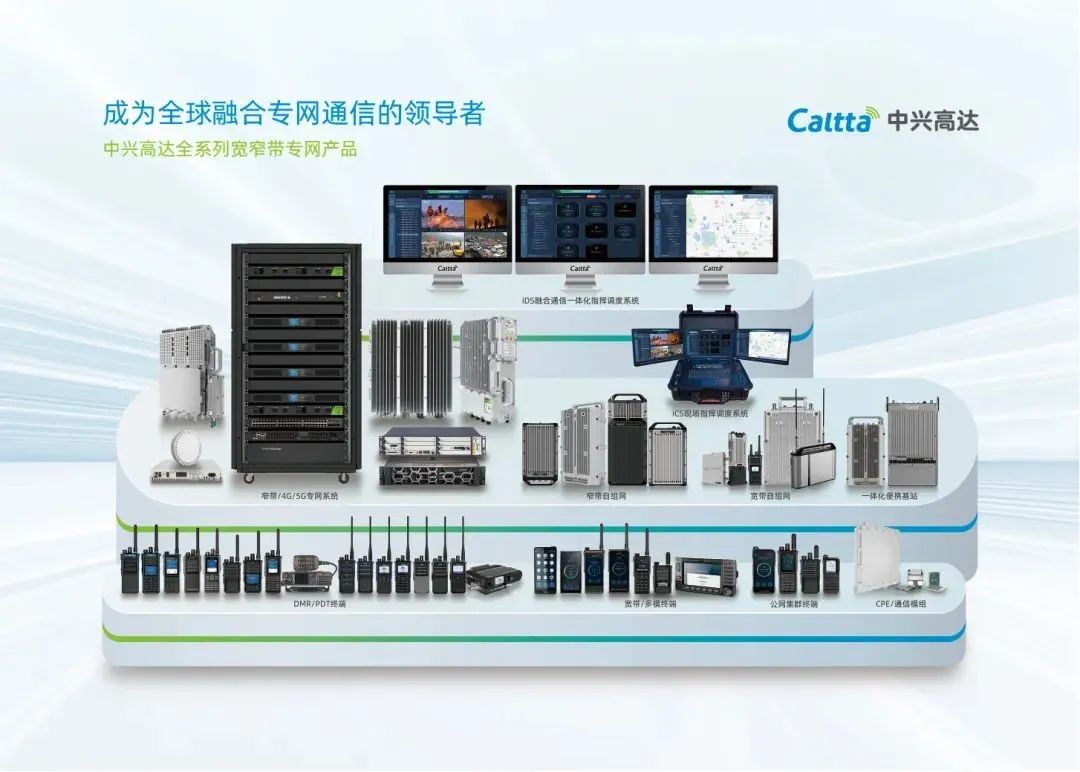Driven by both national policy benefits and market demand, domestic emergency communication is experiencing unprecedented development opportunities. As an industry-leading enterprise, Caltta has achieved multiple breakthroughs in 2024, leveraging its strong technical foundation and comprehensive solutions, and increased its market share from 25% the previous year to 40%, maintaining its position in the top tier of the industry. At the start of 2025, Caltta led the industry in constructing a technical matrix combining "fully integrated communication + domestic large models," promoting a leap from functional to intelligent private network communication. Facing the increasingly complex business needs in fields such as emergency command and public safety, how does Caltta maintain its leading position? In an exclusive interview, Caltta CTO Mou Yongjian delved into how the company relies on its technical foundation, uses AI integration as an engine, and supports ecosystem synergy to forge the "China Solution" with hard-core competitiveness through validation in extreme scenarios.

Caltta CTO Mou Yongjian
In recent years, the domestic emergency market has welcomed a dual benefit of policies and demand. In 2024, the Ministry of Emergency Management issued the "370MHz Emergency Command Narrowband Wireless Communication Network Local Construction Task Book," and Caltta secured projects for emergency communication network construction in more than 20 provinces and cities nationwide, increasing its market share from 25% to 40%, firmly within the industry's top tier. Mou Yongjian pointed out that 2024 was a year of breakthrough results for the company in terms of technical accumulation and industry empowerment, driven by the composite advantage of "technology + ecosystem + policy."
Caltta, as the world's only company mastering both broadband cluster, narrowband cluster, and broadband-narrowband integrated core technologies, possesses independent intellectual property, core technologies, and full-process capabilities in design, research, development, and production, launching several innovative solutions:
Broadband-Narrowband Integrated Technology
By combining 5G/4G broadband clusters with PDT narrowband clusters, multi-service integrated dispatching of voice, video, data, and more is achieved, ensuring communication stability in extreme environments. For instance, the "fully integrated" solution supports seamless switching between public networks and private broadband/narrowband networks, addressing the pain point of traditional equipment incompatibility.
Rapid Deployment Capability
Portable base stations (such as the P300) and self-organizing network equipment (sMesh) can complete network setup within 5 minutes, supporting rapid response in scenarios without electricity or networks. During the previous earthquake in Qinghai, Caltta quickly restored communication in the disaster area through a 370M PDT and LTE hybrid network.
Cloud-Network-End Coordination
Utilizing a flexible architecture of the "Emergency Cloud Command Platform + Network Layer + Terminal Layer," real-time cross-system data sharing and multi-department collaborative decision-making are realized.
Caltta collaborates with various forces from industry, academia, and research to promote the formulation of national standards such as PDT and B-TrunC, jointly constructing an open, inclusive, and collaborative industry pattern.
At the Industry Chain Level
Caltta is committed to building an end-to-end autonomous and controllable solid industry chain covering chips, terminals, base stations, core networks, and command and dispatch systems, actively expanding the ecosystem from technical breakthroughs in the development department to product formation in the production line, and then to widespread application in the market, each link closely interconnected.
At the Industry-Academia-Research Synergy Level
Co-building emergency communications laboratories with institutions like the China Fire and Rescue Institute to tackle critical technologies and study actual rescue methods and theories; leveraging Beidou high-precision positioning technology, offering collaborative solutions with the Public Security Certificate Center and Zhuzhou Public Security; also, based on the Beidou Short Message Platform, tightly collaborating with upstream and downstream units to jointly promote the formulation and dissemination of industry standards, further strengthening the synergy of the entire industry chain.
At the Industry Solution Level
Caltta actively explores innovative business models, launching customized industry solutions in collaboration with various parties to empower communication assurance in emergency rescue scenarios such as urban fires, forest and grassland fires, and major natural disasters. For example, in the rescue during Typhoon "Morakot" in Hainan, collaborating with air traffic control departments and operators, a PDT base station was carried by drones to quickly establish an aerial communication bridge, ensuring real-time information transmission on the disaster situation.
In line with the national information and communication creation strategy, Caltta has launched a full range of domestically-produced emergency command systems, with single Beidou terminal devices already widely used in complex environments such as Xinjiang and Yunnan. In 2023, the central government increased the issuance of one trillion yuan of national bonds to support disaster prevention and mitigation, and Caltta actively responded to the policies of the Ministry of Emergency Management, the National Fire and Rescue Bureau, and others, deeply participating in the "Natural Disaster Emergency Capacity Enhancement Project," researching communication assurance shortcomings, solutions, and innovative products for disaster prevention and mitigation, providing equipment and technical support for the construction of the 370MHz private network.
In recent years, Caltta has constructed a comprehensive emergency communication product matrix through deep participation in multi-department cooperative communication assurance tasks in "cut-off roads, cut-off networks, power outages" extreme environments. Its independently developed "Air-Ground Integrated" communication system has formed multi-faceted product forms including airborne, vehicle-mounted, portable, and backpack, and successfully launched several lightweight, low-power consumption multimode products. Mou Yongjian stated that in various emergency scenarios, Caltta's product solutions have stood the test of extreme environments, accumulating invaluable and rich practical experience, which is being provided to multiple fields with transferable value through scenario-based sedimentation, systematic reuse, and modular output.

Shanghai Typhoon "Bebinca"
Caltta's 370MHz dual-mode terminal GH960S was distributed to coastal, riverine, and disaster-prone areas to construct a communication lifeline, achieving second-level disaster information reporting, handling over 100 key data points, and earning time for rescue decisions.
Yunnan Cangshan Rescue
As one of professional dmr radio manufacturers, Caltta's ultra-shortwave self-organizing network system/terminals and Beidou satellite phones coordinated to solve the communication difficulties in forest areas without public networks, helping forest fire rescue personnel safely retrieve 13 missing individuals during a three-day search and rescue.
Xinjiang Integrated Communication
Helping emergency management departments construct a three-tier command system of "Autonomous Region-City-County," achieving cross-level dispatch of voice, video, and conferences through horizontal interconnection and vertical multi-level linkage, effectively improving emergency response efficiency and handling capability across the autonomous region.
Mou Yongjian believes that practical experience drives Caltta to continuously innovate products. The GH900 multimode terminal has validated equipment stability under high altitudes, high temperatures/low temperatures during high-altitude earthquakes, and cross-border rescues. The sMesh self-organizing network technology effectively overcame signal coverage issues in mountainous and underground scenarios; the integrated communication command and dispatch system (iDS) achieved cross-departmental flat dispatch by integrating PDT, LTE, and public network terminals, while the satellite link modular solution reduced deployment complexity and maintenance costs; SDR (Software-Defined Radio) architecture met the urgent needs of various industries such as rail transit, power, and government for rapid deployment, flexible configuration, and efficient communication, providing a highly adaptive solution for emergency communication. For the special needs of industries such as public security, petrochemicals, and logistics, Caltta also introduced products like the PH690Ex explosion-proof terminal, the rugged dispatch PAD, and the GH960S dual-mode walkie-talkie, providing stable and reliable intelligent communication assurance for various fields.

Facing the increasingly complex emergency command needs, Caltta, based on years of technological accumulation, has pioneered the construction of a "fully integrated communication + AI" technical matrix, achieving a closed-loop system of intelligent perception, dynamic deduction, and precise decision-making, promoting intelligent transition in private network communication, and creating more efficient and intelligent full-link solutions for emergency command.
Mou Yongjian stated that from a fully integrated perspective, the integration of narrowband technology (such as PDT) and broadband technology (such as LTE, 5G) is the core evolution direction. Narrowband handles critical voice communication and wide-area coverage, while broadband supports high-speed data services (such as video and image transmission), each having its advantages. Caltta will continue to delve into the integration of all scenarios, understand customer pain points, and propose innovative solutions.
Core Network Integration
By integrating narrowband and broadband base stations, unified dispatching of voice, data, video, and positioning can be achieved, providing unified network management, identity authentication, and security strategies to ensure efficient network collaboration.
Terminal Integration
Caltta's multiple multi-mode terminals supporting PDT+LTE/5G can automatically switch to the broadband network in areas without narrowband coverage, ensuring uninterrupted critical communication while supporting remote dispatch and high-definition video transmission business needs.
Service Integration
Fully leveraging broadband advantages to address the limitations of narrowband systems in big data transmission and remote upgrades. For instance, OTAP over-the-air programming is more efficient in a broadband environment, and terminal software upgrades can be completed online, significantly improving maintenance efficiency.
Collaborative Networking
Combining cluster base stations with self-organizing network technology, ensuring stable and smooth emergency communication by using direct passband and wireless relay modes in scenarios without public networks or signal blind spots (such as disaster rescue sites, mountainous areas), improving network coverage capabilities.
Facing the trend of intelligent private network transformation in the industry, Caltta took the lead in deploying the domestic DeepSeek large model, launching a "fully integrated communication + AI" technical matrix, directly addressing the pain points of traditional systems such as "data silos" and "delayed decision-making." Mou Yongjian emphasized that large model technology is the key to improving the intelligence level in various fields, especially in scenarios like public security, emergency, and industry. As business complexity continues to rise, the shortcomings of traditional communication systems become increasingly apparent, and the emergence of large model technology provides new ideas and directions for addressing these issues. For instance, in the field of emergency command, the "intelligent perception—dynamic deduction—precise decision-making" full-link solution built by Caltta can respond quickly in the first instance of disaster occurrence, greatly improving rescue efficiency, reducing life and property losses, and helping relevant departments form a modern emergency command new paradigm of "data-driven, AI-enabled, and dual-use for peace and war."
Multi-Modal Data Collection and Intelligent Perception
By using multi-modal pre-training models, real-time collection of on-site sensor data (such as vibration, images, voice, etc.) is achieved, breaking data barriers, realizing cross-departmental information sharing, and providing comprehensive information support for subsequent decision-making.
Digital Twin and Dynamic Deduction
Combining the DeepSeek-R1 large model and digital twin technology to build a dynamic evolution sandbox, accurately simulating the development trend of the disaster to ensure a high match between the rescue plan and the on-site situation, enhancing the foresight and precision of emergency command.
Intelligent Decision-Making and Plan Matching
The DeepSeek reasoning engine supports millisecond-level risk determination and intelligent plan matching. In public security practice, cross-departmental response speed is increased by 3 times, and the time taken to handle major cases is reduced by 50%; in emergency scenarios, system response time is reduced to 90 seconds, increasing overall efficiency by 3.8 times.
Data-Driven Explicit Value
Incident recording time is reduced by 80%, intelligent allocation accuracy reaches 98%; AI predictive models lower incident rates in key areas by 40%, ensuring fast and accurate command and decision-making, earning valuable time for rescue, fully showcasing the enormous potential of AI empowerment in emergency command.
Empowering Intelligent Private Network Operation and Maintenance, Optimizing Communication Efficiency
Through AI empowerment in multiple core links such as intelligent operation and maintenance, terminal, network, and after-sales support, Caltta will promote the deepening and transformation of private network applications, constructing a safer and more efficient communication network for fields like emergency communication, public security, energy, and rail transit. For example, transitioning operation and maintenance from manual to AI-driven, achieving automation in equipment health checks, configuration analysis, and power optimization, helping customers reduce operation and maintenance costs, and using algorithms to optimize terminal voice processing, making voices clearer in noisy environments, etc.
Mou Yongjian stated that Caltta will continue to deepen the integration innovation of large models and vertical scenarios, providing stronger technical support for the construction of intelligent emergency systems. Regarding the digitalization requirements for shared walkie-talkies proposed by the National Radio Office, he revealed that Caltta has initiated technical evaluations, planning to launch related products to better meet industry needs. Meanwhile, Mou Yongjian also mentioned that Caltta will actively layout in industrial scenarios and low-altitude economic applications, introducing integrated communication machines R4700, professional 5G intelligent explosion-proof terminals NH970Ex, and 1.4G low-altitude coverage solutions to provide comprehensive support for campus communication, emergency drone rescue, and low-altitude operations, promoting cross-border integration and innovative application of communication technology.
In this wave of technological innovation, Caltta is building a new intelligent integrated ecosystem with innovation drive and ecosystem synergy at its core, opening up broader development prospects for emergency communication and cross-border applications. Mou Yongjian believes that through continuous technological progress and industry collaboration, Caltta will continue to provide "high-reliability, intelligent, and low-cost" private network solutions for fields such as emergency command, public safety, and energy, assisting in digital transformation and intelligent upgrade to enter a new stage.




+86-0755-86556659